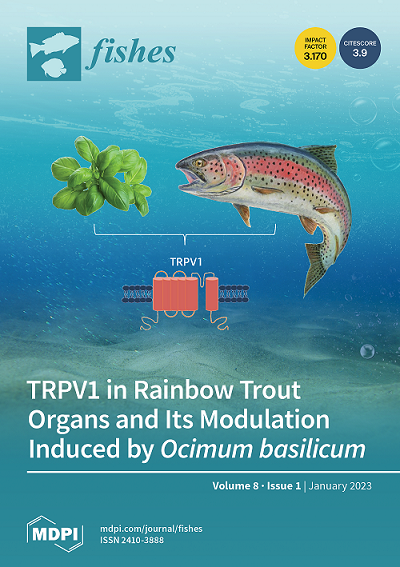Successful Cryopreservation of Spermatogonia Stem Cells of Neotropical Catfish (Rhamdia quelen) and Enriched Germ Cell Transplantation into Common Carp (Cyprinus carpio) Testes
IF 2.4
3区 农林科学
Q2 FISHERIES
引用次数: 1
Abstract
Cryopreservation and transplantation of spermatogonial stem cells (SSCs) offer new possibilities in the conservation of valuable genetic resources. Therefore, the present study developed a cryopreservation method for whole testicular tissue and for spermatogonial stem cells of jundia catfish (Rhamdia quelen) and developed an enriched germ cell transplantation of jundia catfish into depleted common carp (Cyprinus carpio) testes. Our findings from whole testes indicate that the cryoprotectants MeOH (1.3 M), DMSO (1.4 M), and EG (1.4 M) resulted in high cell viability rates of 67%, 62%, and 51.5%, respectively. Notably, in the case of enriched post-thaw SSCs, DMSO exhibited the highest cell viability at 27%, followed by EG at 16% and MeOH at 7%. Additionally, we observed the successful colonization and proliferation of jundia germ cells within the recipient gonads of common carp following transplantation. Notably, Sertoli cells were identified in the recipient gonads, providing support to the stained donor germ cells and indicated the formation of cysts. Our data suggest that cryopreserving entire testicular tissue presents a viable alternative to cryopreserving isolated testicular cells, and the spermatogonial cells isolated from testes of jundia retained transplantability characteristics. Nonetheless, more investigations are required to reach the goal of functional gamete and to assess the effectiveness of transplantation using these cryopreserved tissues. Taken together, proper cryopreservation methodology and transplantation technology could aid the preservation practice of fish genetic resources.新热带鲶鱼精原细胞的成功低温保存及富生殖细胞移植至鲤鱼睾丸
精原干细胞的低温保存和移植为保存宝贵的遗传资源提供了新的可能性。为此,本研究建立了jundia catfish (Rhamdia quelen)全睾丸组织和精原干细胞的冷冻保存方法,并将jundia catfish的富集生殖细胞移植到枯竭的鲤鱼(Cyprinus carpio)睾丸中。我们对全睾丸的研究结果表明,低温保护剂MeOH (1.3 M)、DMSO (1.4 M)和EG (1.4 M)的细胞存活率分别为67%、62%和51.5%。值得注意的是,在解冻后富集的ssc中,DMSO的细胞活力最高,为27%,其次是EG,为16%,MeOH为7%。此外,我们观察到jundia生殖细胞在移植后在普通鲤鱼受体性腺内成功定植和增殖。值得注意的是,在受体性腺中发现了支持细胞,为染色的供体生殖细胞提供支持,并表明囊肿的形成。我们的数据表明,冷冻保存整个睾丸组织是冷冻保存分离睾丸细胞的可行选择,并且从jundia睾丸分离的精原细胞保留了可移植特性。然而,需要更多的研究来达到功能性配子的目标,并评估使用这些冷冻保存组织移植的有效性。适当的冷冻保存方法和移植技术有助于鱼类遗传资源的保存实践。
本文章由计算机程序翻译,如有差异,请以英文原文为准。
求助全文
约1分钟内获得全文
求助全文

 求助内容:
求助内容: 应助结果提醒方式:
应助结果提醒方式:


